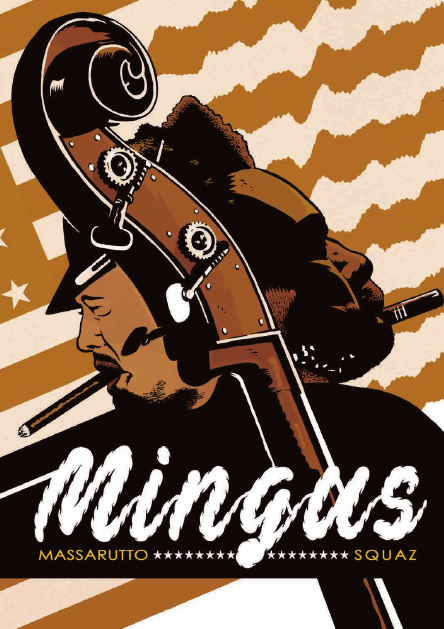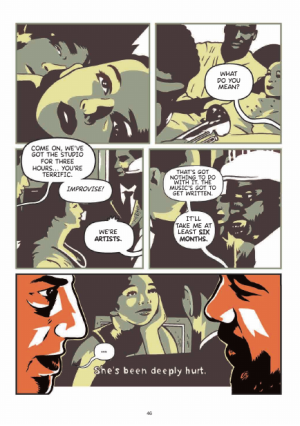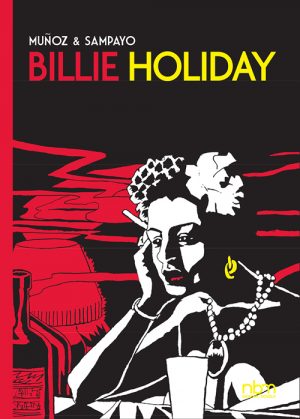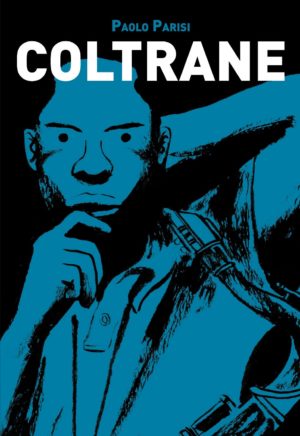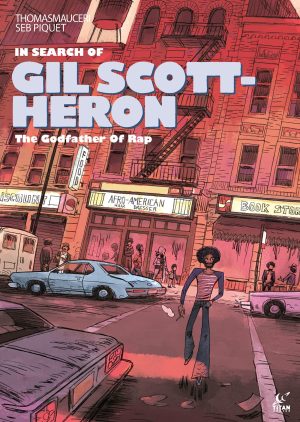Review by Ian Keogh
Charles Mingus was a prodigiously talented multi-instrumentalist and innovator who moved jazz music forward from the styles of the big band era to the improvisations of the late 1950s. Mingus, however, is no traditional biography, although it includes incidents from his life, but more a series of sketches associated with him.
Flavio Massarutto comes to Mingus as a respected writer about jazz in Italy, and it’s the improvisation around a theme that he takes to heart, structuring Mingus as a nine track album, with each chapter exploring a different period of Mingus’s life via his concerns at the time. Each chapter, or track, reveals a little about Mingus and his attitudes.
The most indirect concerns Pithecanthropus Erectus, Mingus’ 1956 creative and commercial breakthrough. The title was the anthropological term then used for what would now be referred to as Homo Erectus, the developmental link between apes and humanity, and the album sleeve illustrates the theme. Massarutto quotes Mingus regarding the album, then presents an eight page sequence of early humans setting up their own destruction.
That’s fanciful, but more direct incidents are brief glimpses into a great creative mind, yet a person also tormented, angry and suspecting he’s mentally ill. Mingus explaining himself is sourced from his autobiography, where he considers himself a fusion of three people, and Massarutto ensures they’re all seen, the greatest statement at the end concerning the man unworried and unmoved during a bomb scare.
Squaz is an innovative designer, as seen by his incorporation of Mingus’ album sleeves into the art, especially on chapter separations, although adding a couple of dozen naked women to the sleeve of Tijuana Moods is plain exploitative. Visual style varies according to the tone of any given sequence, again reflecting the theme of improvising around a theme, while Sqauz’s muted colours are instrumental in setting the mood, in some sequences more so than the actual art. When it comes to people, Squaz prefers the representational in preference to likenesses, but that’s no hindrance to the presentation. As other artists have discovered, though, no matter how good the individual images are, conveying the emotions of music in a soundless artform is a thankless task.
It’s a minor comment when so much is either wordless or directly quoted, but conversations can be extremely flat and awkward sounding, which may be due to the translation supplied by Nanette McGuinness. As exemplified by the sample art, there are also places where it’s unclear who’s speaking. The logical assumption is Mingus instructing his band members, but it’s actually a film director.
Massarutto and Squaz are true to their structure throughout, expressing the vibrant possibilities of jazz via constantly shifting moods and approaches. However, as is the case with experimental jazz, their method is likely to alienate more than it attracts, yet those it attracts will defend it vehemently and passionately. In terms of a graphic novel, though, there’s little cohesion.
